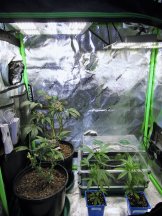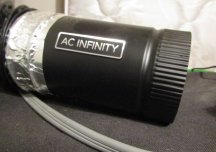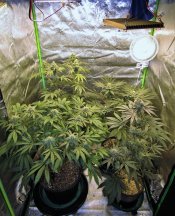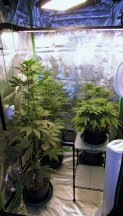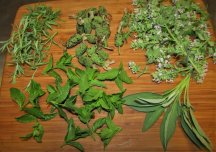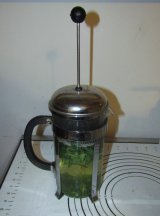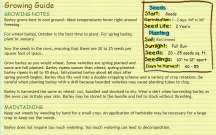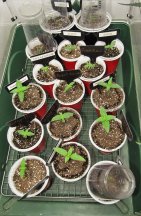Have you given any thought to muddling the mix before adding the hot water? I love the idea of knowing every facet of what goes into veggies and flowers. This is really cool.
Actually, I am thinking about brewing some EM1. This is from THC Farmer
Homemade EM1 | THCFarmer - Cannabis Cultivation Network <<<<Link
Effective Microorganisms, aka EM Technology, is a trademarked term now commonly used to describe a proprietary blend of 3 or more types of predominantly anaerobic organisms that was originally marketed as EM-1™ Microbial Inoculate but is now marketed by a plethora of companies under various names, each with their own proprietary blend. “EM™ Technology” uses a laboratory cultured mixture of microorganisms consisting mainly of lactic acid bacteria, purple bacteria, and yeast which co-exist for the benefit of whichever environment they are introduced, as has been claimed by the various em-like culture purveyors. It is reported[1] to include:
Lactic acid bacteria: Lactobacillus plantarum; L. casei; Streptococcus Lactis.
Photosynthetic bacteria: Rhodopseudomonas palustris; Rhodobacter sphaeroides.
Yeast: Saccharomyces cerevisiae; Candida utilis (no longer used) (usually known as Torula, Pichia Jadinii).
Actinomycetes (no longer used in the formulas): Streptomyces albus; S. griseus.
Fermenting fungi (no longer used in the formulas): Aspergillus oryzae; Mucor hiemalis.
The concept of ‘Friendly Microorganisms’ was developed by Japanese horticulturist Teruo Higa, from the University of the Ryukyus in Okinawa Prefecture|Okinawa, Japan. He reported in the 1970s that a combination of approximately 80 different microorganisms is capable of positively influencing decomposing organic matter such that it reverts into a ‘life promoting’ process. Higa invokes a ‘dominance principle’ to explain the effects of his ‘Effective Microorganisms’. He claims that three groups of microorganisms exist: ‘positive microorganisms’ (regeneration), ‘negative microorganisms’ (decomposition, degeneration), ‘opportunist microorganisms’. In every medium (soil, water, air, the human intestine), the ratio of ‘positive’ and ‘negative’ microorganisms is critical, since the opportunist microorganisms follow the trend to regeneration or degeneration. Therefore, Higa believes that it is possible to positively influence the given media by supplementing with positive microorganisms.
This is a recipe I learned from a friend along time ago.
EM/BAM: this a trade secret!(lactobacillus culture)
1/4 cup rice
1quart Mason Jar
1 cup water
1 fine mesh strainer
80 oz milk depends on how much one is making
1 gallon container or jar
1 tsp. black-strap molasses
Procedure:
1. Place rice and cup of water in mason jar and shake vigorously until water is cloudy white, strain off rice kernels and discard into your compost bin or cook for dinner.
2. place cap on loosely and store in a cabinet or cool dark place for 5-7 days.
3. Sift off top layer and strain liquid (serum)
4. measure your rice liquid and now add a ratio of 1 part fermented rice to 10 parts milk, I would culture in a 1 gallon jar. let sit for 5-7 days.
5. sift off curd settlement and add to your soil or feed your animals it is good for their digestion, then there should be a light yellow serum left this is your unactivated serum.
6. Add 1 tsp molasses to feed and keep your bacteria alive and refrigerate. should have a shelf life of 6-12 months.
7. to activate microorganism activities add to room temperature non-chlorinated water at a ratio of 1 part Serum to 20 parts water.
8. feed to plants either straight into soil or follicular feeding.


